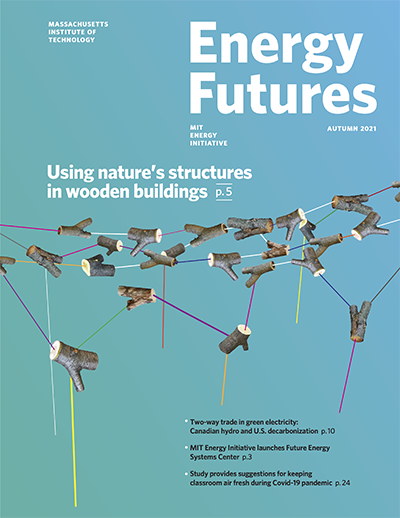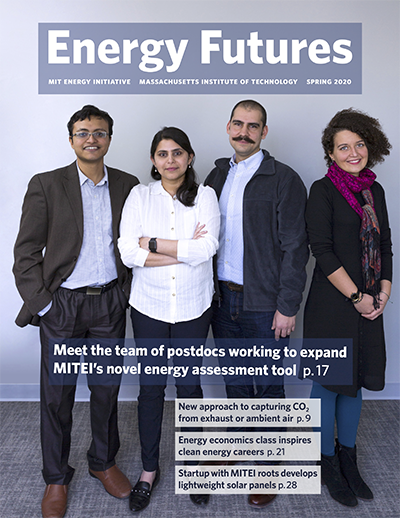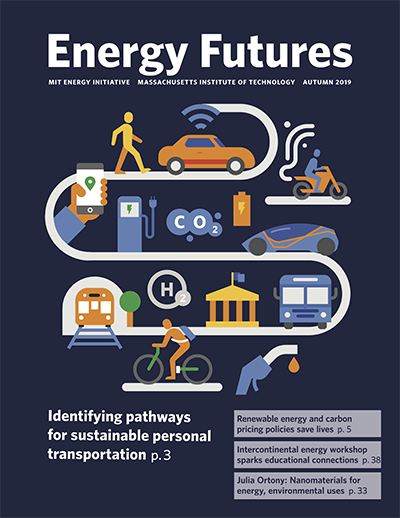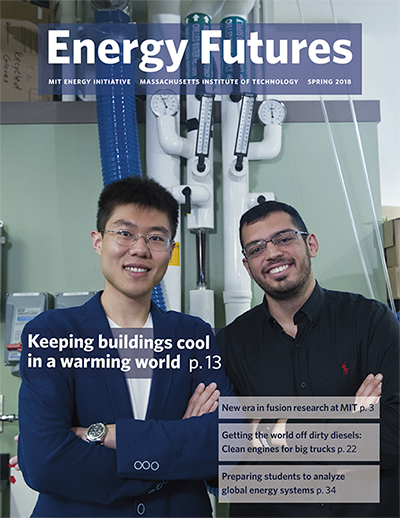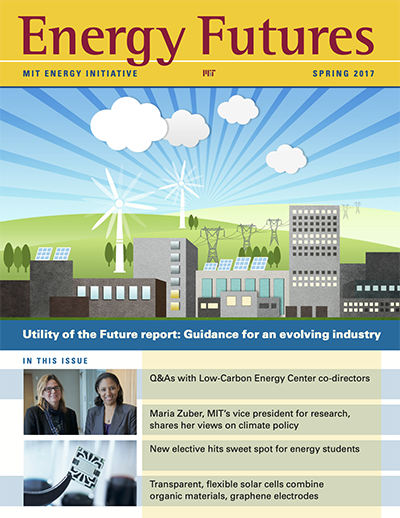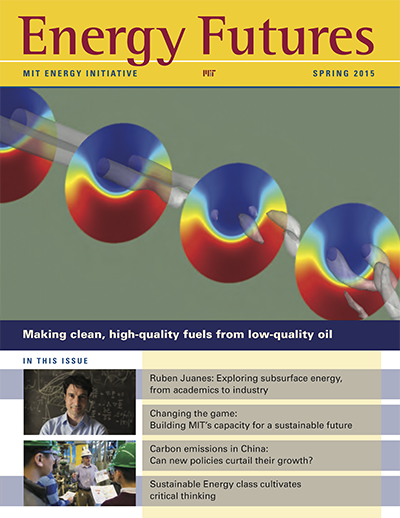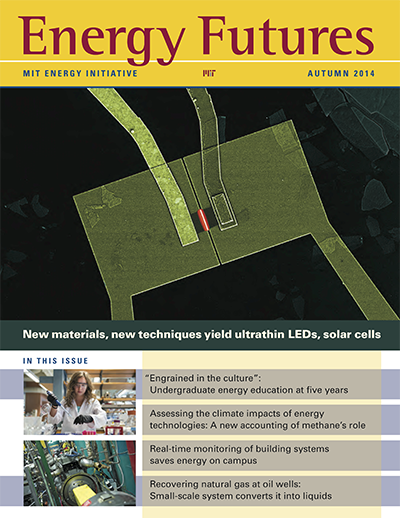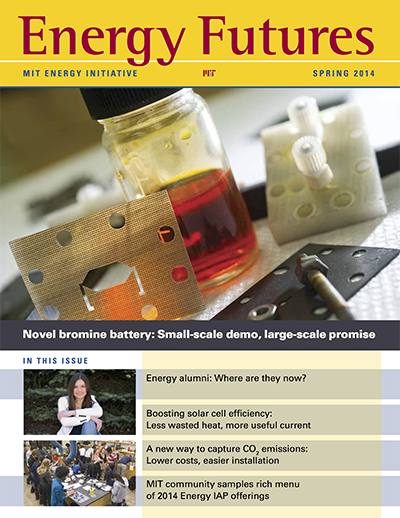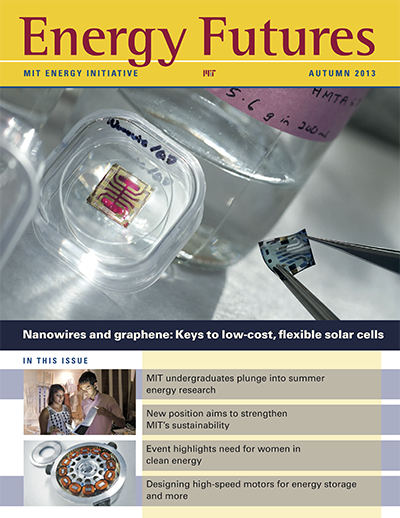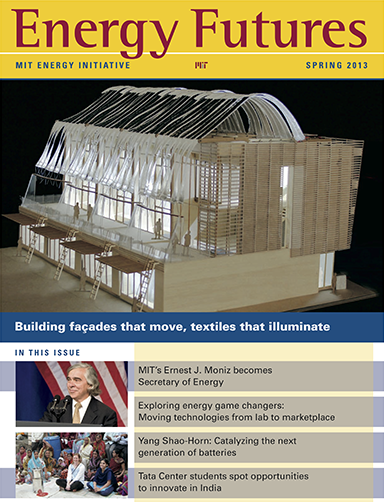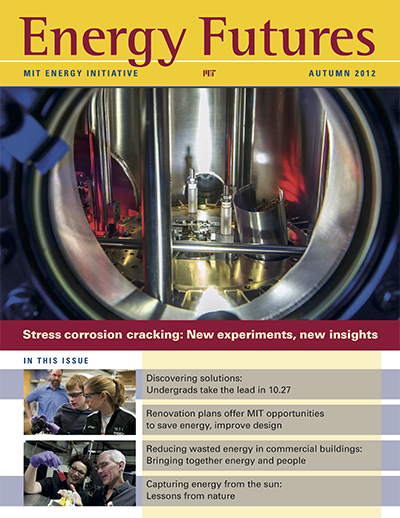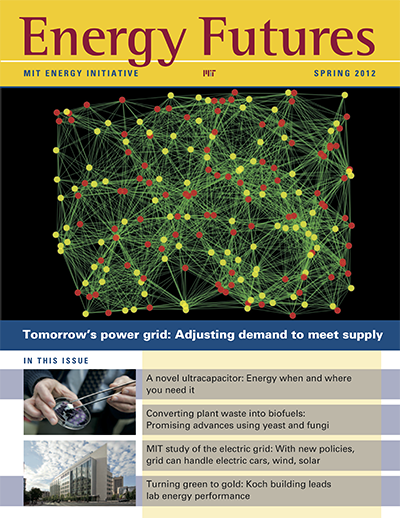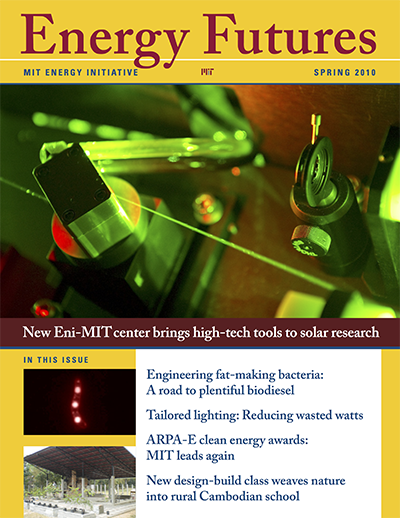Spring 2023
Letter from the director
Dear friends,
It has been my great pleasure to welcome you to Energy Futures throughout my time as director of the MIT Energy Initiative. After 50 years on the MIT faculty and the past decade as MITEI director, I am retiring this summer. As I scale back my activities, I do so with great pride and confidence in the ongoing work of MITEI and so many outstanding MIT students, professors, researchers, and staff, who are transforming the world’s energy systems to address climate change and meet the energy needs of the world.
Our cover story focuses on an important area of decarbonization—the built environment. A team in the MIT Sustainable Design Laboratory has developed a website providing simulation tools that city policy makers can use to analyze the effectiveness of building retrofit incentives in reducing carbon emissions. Analyses performed with eight cities around the globe showed the limits of their current retrofitting incentives and helped to motivate policy changes to speed the path to net zero.
This edition of Energy Futures is full of reporting on promising energy research. Read about an exciting effort to make fuel from biomass for aviation—one of the most difficult to decarbonize industries. As the biomass source, the chemical engineers use lignin, a plant material typically rejected as waste during biofuel production. The new processing technique may finally make possible an aviation fuel made from 100% renewable material.
Other research articles include a focus on electrification from low-carbon sources as a pathway for decarbonization of the chemical industry; a study that finds dramatic health benefits from prioritizing powering down the most polluting fossil fuel power plants when wind energy is available; and the development of ultralight solar cells—thinner than human hair—that can turn almost any surface into a power source. And there are more research stories to explore.
Meet Associate Professor of Civil and Environmental Engineering Desirée Plata, who directs the MIT Methane Network, dedicated to reducing methane emissions. Plata’s lab has developed a technique using a clay-like material called zeolite to capture and convert methane—an approach that could have a fast, beneficial impact on climate warming.
This issue also shares the story of a remarkable MIT alum, Ian Miller SM ’19. The suffering of the people of Ukraine has touched many people. But not many have responded as Miller has. Within hours of the Russian attack on Ukraine in February 2022, Miller, then a MITEI project manager, was jetting to Poland and the Polish-Ukraine border, to help. He has now co-founded a nonprofit that is delivering aid to Ukraine and her people.
The start of a fusion energy industry will require a steady infusion of skilled talent. A new program at the MIT Plasma Science and Fusion Center is addressing that need—by making meaningful fusion energy research accessible to undergraduates. Read about FUSars—fusion undergraduate scholars—and the inaugural cohort of 10 students who began this winter.
As always, our events team at MITEI is busy. Our spring symposium focused on the role of offshore wind in decarbonizing the electric power system. It drew academics, energy analysts, government officials, and utility executives, who discussed threats to the rapid rollout of offshore wind and explored paths for overcoming gridlock. At MITEI’s Earth Day Colloquium, Massachusetts State Senator Mike Barrett discussed roadblocks in the way of development of an offshore wind industry in the state and yet expressed optimism in achieving Massachusetts’ decarbonization goals.
Finally, don’t miss our article about the MIT spinoff, Waya Energy. Using a set of modeling and visualization tools developed at MITEI, the Waya team has helped governments develop electrification plans in 22 countries on almost every continent.
As you explore this edition of Energy Futures, I thank you again for your support of MITEI and our work. I will remain engaged with MITEI, and I hope you will, too.
Gratefully,

Professor Robert C. Armstrong
MITEI Director





















